23+ Sample Copyright License Agreement
-
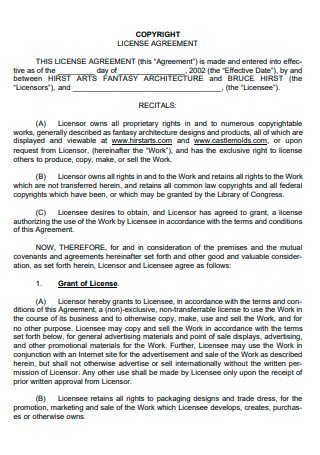
Copyright License Agreement Template
download now -
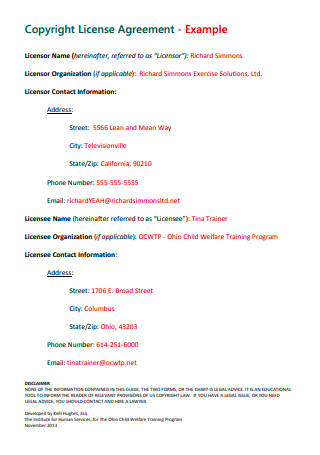
Copyright License Agreement Example
download now -
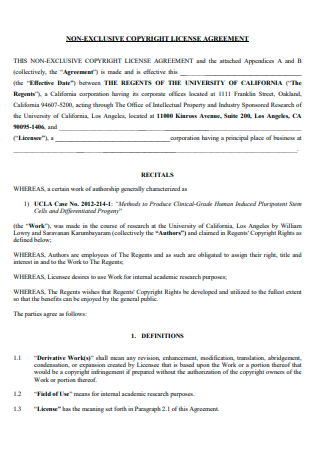
Non-Exclusive Copyright License Agreement
download now -
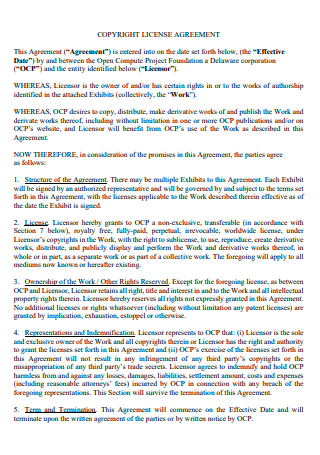
Basic Copyright License Agreement
download now -
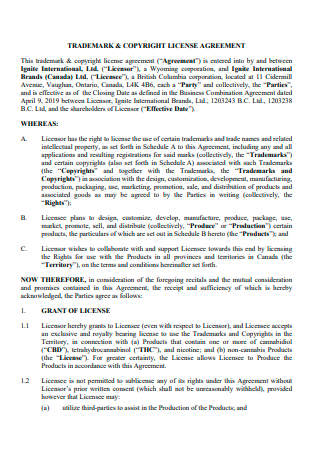
Trademark and Copyright License Agreement
download now -
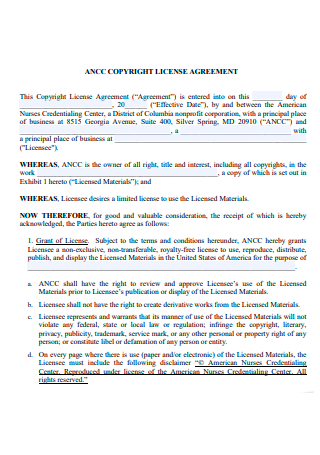
Formal Copyright License Agreement
download now -
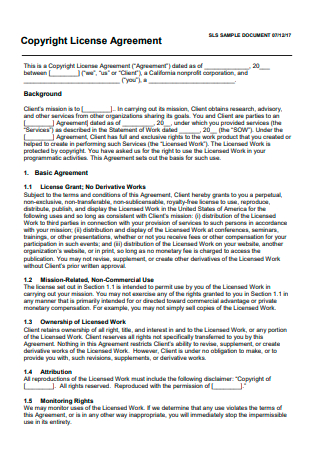
Sample Copyright License Agreement
download now -
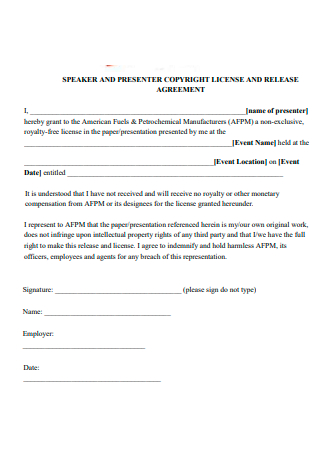
Copyright License and Release Agreement
download now -
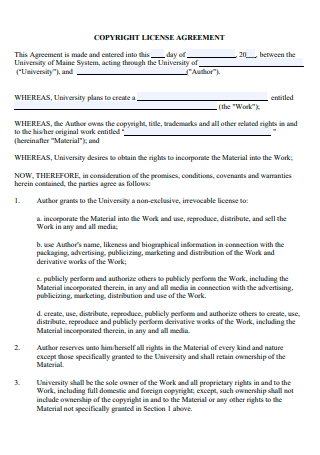
Printable Copyright License Agreement
download now -

Exclusive Software Copyright License Agreement
download now -
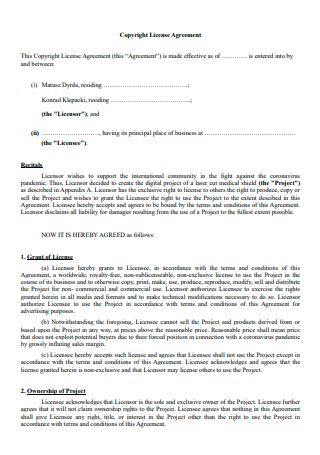
Simple Copyright License Agreement
download now -
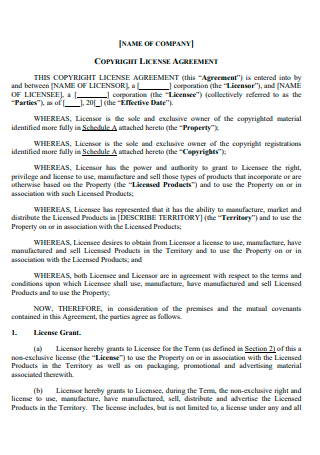
Standard Copyright License Agreement
download now -
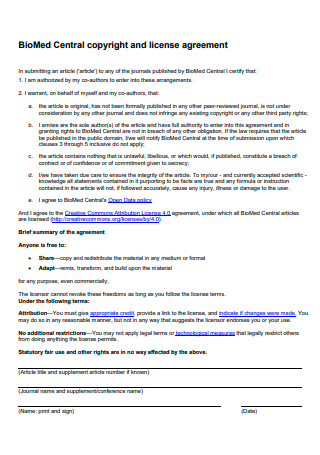
Central Copyright License Agreement
download now -

Copyright License to Publish Agreement
download now -
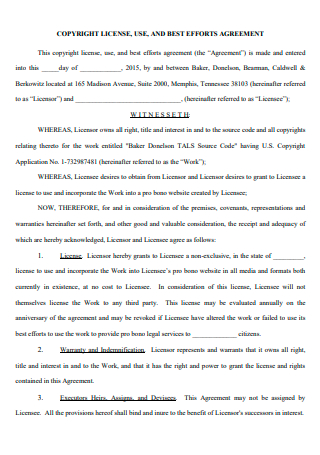
Draft Copyright License Agreement
download now -

Copyright License Agreement Format
download now -
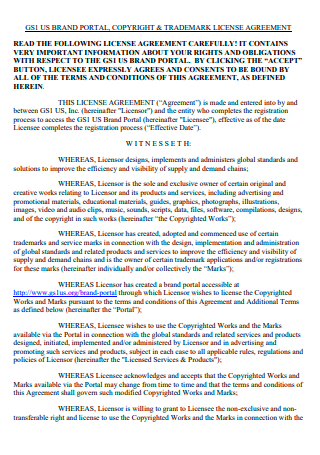
Copyright and Trademark License Agreement
download now -
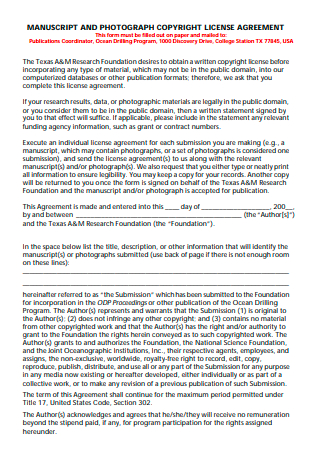
Photograph Copyright License Agreement
download now -
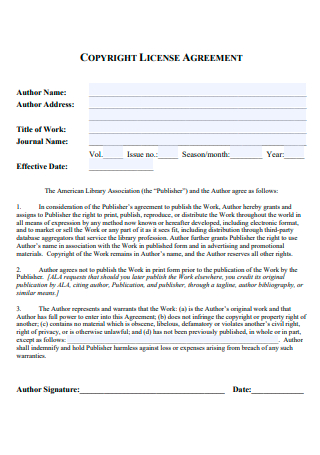
Copyright License Agreement in PDF
download now -
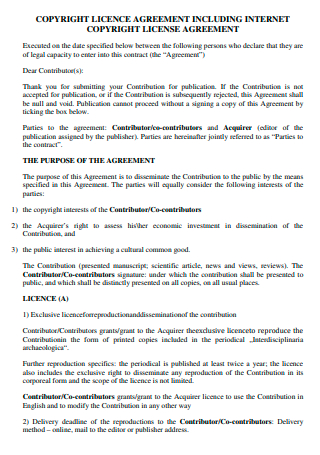
Copyright License Including Internet Agreement
download now -
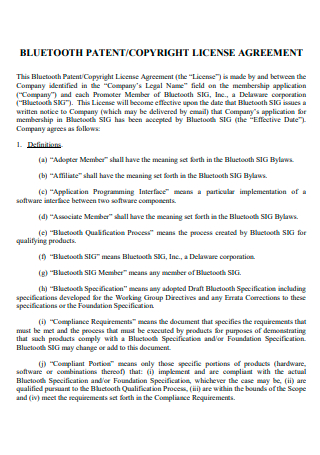
Bluetooth Patent Copyright License Agreement
download now -
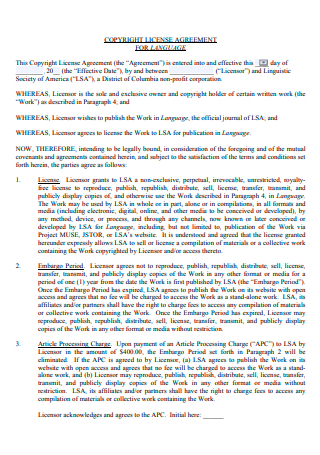
Copyright License Agreement For Language
download now -
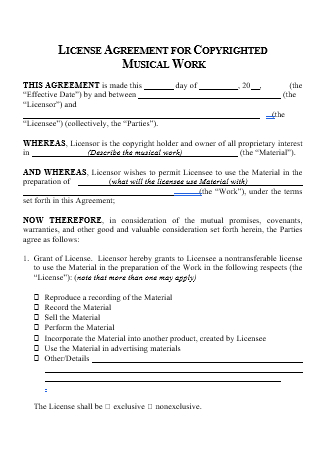
Copyrighted Musical Work License Agreement
download now -
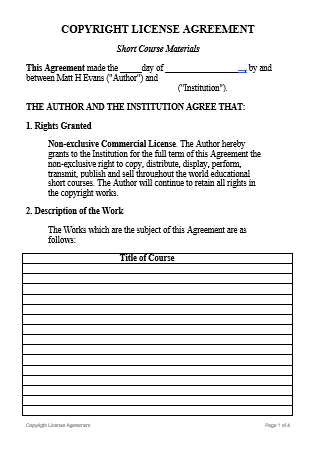
Copyright License Agreement in DOC
download now
FREE Copyright License Agreement s to Download
23+ Sample Copyright License Agreement
Copyright License Agreement: What Is It?
4 Things You Need to Know about Copyright
Creating a Copyright License Agreement
FAQs
Is there a difference between a copyright, a patent, and a trademark?
What is meant by a Transfer of Copyright Ownership?
How to register a copyright work?
Why is it important to register your work with the Copyright Office?
Copyright License Agreement: What Is It?
To start off, copyright means the legal rights of the owner to the exclusive use, distribution of their own original creative works or intellectual property, as well the right to authorize another individual or group to use and distribute their work. A creative work refers to an original work or material created from human knowledge and intellect, usually in the form of a literary or artwork work. A copyright covers both the creator and owner of the work, and those who were given the permission to use and distribute the work.
This is what a copyright license agreement is all about. The copyright license agreement is a written documentation that states that the copyright owner gives their permission, or authorizes, for an individual or a company to use and to distribute their copyrighted work for a given period of time. It also stipulates fees to be paid to the copyright owner, the material or work to be used, and the rights of the recipient of the authorization as well.
4 Things You Need to Know about Copyright
In essence, once you have made an original and creative piece of work, it is automatically protected on the date of its creation. It is considered as created once it is fixed “permanently” on something tangible, such as papers, or on anything that’s solid and concrete that can show proof that a work has been made, and has the capability of being reproduced, transferred, or communicated. A mark on the piece of work showing the name of the author and the date it was created is sufficient proof of copyright. To register the copyright means to give further legal protection to the owner in case of unauthorized use and distribution. Here are the four top things that any person needs to know about copyright.
Creating a Copyright License Agreement
One way to promote fame and gain financial success for a creative work is for the author to license out the exclusive rights to use to people who know how to publish, promote, and turn their work into something that reaches a broader audience. A very popular example would be an author licensing out the rights to use his or her book material to a film producer so that the book will be reproduced into a movie screenplay. The authority to use, the process and how it will be used, credits, and shares in revenue are all written down and documented in a copyright license agreement. The following are the common steps taken when creating a copyright license agreement.
Step 1: Identifying the Parties Involved
The first part is naming all the parties involved in the agreement, including the organization that they’re in, and their contact information as applicable. The word “Licensor” refers to the original owner of the copyright, the one who will be giving the authorization or permission, and the word “Licensee” is the recipient of the rights or permission. After specifically naming all the parties, the words licensor and licensee will be used all throughout the agreement.
Step 2: Recitals
Usually referred to as the “whereas clauses”, gives a brief background description of the parties. This also describes the material that’s subject in the agreement, the rights of the licensor, and what the licensee hopes to obtain from the agreement.
Step 3: Granting of License
This part is where the extension and the license of the copyrights is stated. Specifically write down what kind of rights are being granted, what parts of the creative work are to be used, and the how or the process on which it will be used. For example, in the case of an author getting into a copyright license agreement with a publishing company for his or her book, the following details should be included: 1) Publication type and the materials to be used. If printed, will it be hardbound or softbound? Other publication types can be through digital media channels as CDs, DVD, Website, social media platforms, et cetera; 2) Publication date. The publication date, or the release date, of the book should also be agreed between the publisher and the author; 3) Number of pages and number of book copies to be produced; 4) Market circulation. This refers to where the book will be sold or circulated; 5) and last but not least, the price of the book identified in both retail and wholesale prices.
Step 4: Credits and Fees
Credit refers to how the licensor will be credited upon the licensee’s use of the creative work. The agreement could specifically state the way that the credit should appear on the work, or it usually comes in the form of “reproduced with permission by (licensor)”. The fees, especially in a book publication, usually comes in the form of royalties. This is the payment given to the licensor by the licensee in exchange for the rights to use and distribute the creative work. Aside from the initial payment given, royalties are usually paid for every sale made. It can be as a commission on per item sold basis, or in the form of an agreed amount over a certain period of time. A detailed calculation of fees, or royalties, should be indicated in the written agreement. Also, there should be an indication in the agreement as well that the licensee should keep an accurate record of all the sales pertaining to the material.
Step 5: Indemnification and Termination
An indemnification clause in an agreement sets out to protect a party from certain liabilities arising from loss or damages that could result from the use of the creative work. An example would be that any of the parties shall indemnify and hold the other party harmless for any damages, losses, claims, penalties, or injuries incurred upon by a third party. If there would be an infringement, for example, that the licensor violated the terms of the agreement, the licensor will pay all the applicable expenses and costs in relation to the claim made by the licensee, which usually comes in the form of the attorney’s fees. Termination refers to events, actions, or circumstances, whether intentional or unintentional, whether expected or unexpected, that will put an end to the agreement. A list of causes should be included, and if it’s an agreed termination, that a 30-day written notice should be given to the other party. Upon the effective date of the termination, the licensee shall halt and cease the use and reproduction of the licensor’s creative work, but shall continue, however, to fulfill existing orders, if any.
Step 6: Signatories
Of course, an agreement is only as good and as effective once it is signed by both parties. Found at the bottom part of the agreement, once dated and signed, both parties are then expected to adhere to the terms found in the agreement, as well as to the applicable laws and regulations to which state or country that the agreement is governed by.
FAQs
Is there a difference between a copyright, a patent, and a trademark?
A copyright protects unpublished and published creative works, or original works of authorship. A patent protects inventions and discoveries, things that are not covered by a copyright. Whereas a trademark, protects symbols, words, phrases, or designs registered or established as an identification of a company or a product. Samples of a trademark are brands, logos, and slogans.
What is meant by a Transfer of Copyright Ownership?
Also known as copyright assignment. A transfer of copyright ownership is an intentional conveyance of a transfer of a creative work’s exclusive rights, in whole or in partial, by the copyright owner. It can be done as a whole transfer, meaning that the recipient will be the new and exclusive owner of the creative work, or in parts, meaning that only specified parts of creative work will be transferred.
How to register a copyright work?
In order to register a copyright work, the applicant must prepare the following: an application form from the Copyright Office; the corresponding filing fee and charges; and at least one copy of the creative work to be registered. Registration can be done either online, manually visiting the office for submission, or via sending the documents through mail.
Why is it important to register your work with the Copyright Office?
Given that copyright protection is considered automatic upon the creation of the material, there are still some benefits when registering it with the Copyright Office. One of the main benefits of registration is that the owner will have a public record to show proof that they are the owner of the creative work, and that they have a public certification to prove. Another benefit is that this will enhance their protection and claim against unauthorized use and distribution.
A person may be good at composing and making creative and original literary works, but oftentimes would need the help of a third party if they wanted their work to be widely acknowledged. This is often the case for book authors, song lyricists, solo scriptwriters, and others who have good materials on their hand, and would avail a producer’s offer or the services of a publication company in order to help them get that fame and recognition, and of course, that financial success. In order for their work to be protected, they needed a copyright license agreement to set and lay out the terms in which they would be given the credit that they deserved for the work they made.
Writing a copyright license agreement shouldn’t be daunting. We have loads of license agreement templates available on our website that are ready for download, especially ones made for a copyright license. It is easy to use and to fill out. So download one now, and start protecting your exclusive license rights as a copyright owner!
